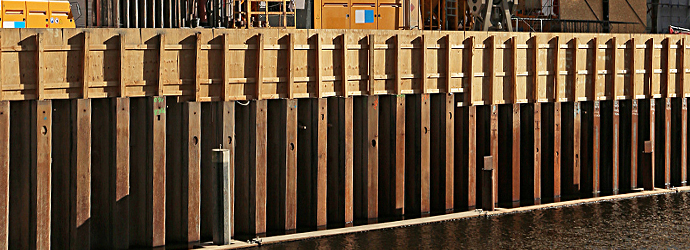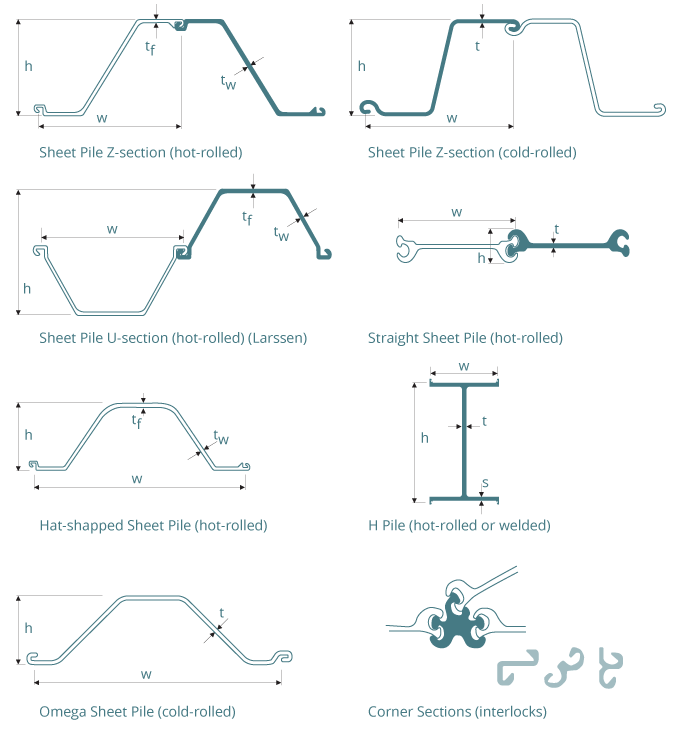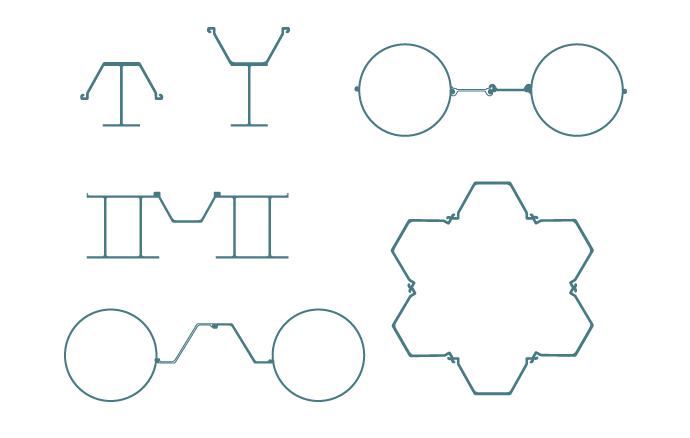Piling Sheets and Piling Walls
The principal of sheet piling is the creation of steel products to a shape such that, by interlocking of the joints or by fitting together on the longitudonal grooves or by means of special fasteners, it can be used to design a continuous wall. There are numerous options and configurations available to meet complex technical requirements with regard to bearing capacitiy, water tightness, pressure resistance and sustainability.
Basic applications for pile sheet walls are: Ports and habour, pumping stations, retaining walls, river controll, containment barriers, load bearing foundations (pile sheets can be combined to form close boxes) and all kind of temorary use for construction works.

The origin of sheet piling dates back more than one hundred years. The first piles were straight web sections. It was Mr. Larssen, State Chief Engineer at the City of Bremen, Germany, who developed the first steel sheet pile, which had a U section shape and riveted interlocks (about 1902). About 1914 interlocking on both sides was first developed and this is still utilized all over the world as the most popular steel sheet pile section. "Larssen" U section sheet piles are famous and well known to civil engineers worldwide. The interlocking system creates a watertight connection and increases the strength of the sheet pile structure. Many years later due to potential structural concerns for the U section interlock the next generation Z-Pile was developed.
The "Handbbok for Port and Habour" from Gregory Tsinker writes: "In 1897 a Danish engineer, Larssen, revolutionized the use of iron sheet piles by introducing a new pile section which was developed from a rolled through section plus a riveted "z" section, to form an interlock; this shape is very familiar in modern construction.
In 1914 Larssen also introduced the first deep-arch section in which interlocks were situated in the neutral axis of the complete section; thus, their material bulk did not influence the bending moment to be taken up. Larssen's inventions and modifications helped to greatly increase the capacity and effectiveness of sheet piles in their ability to resist earth and water pressures."
Pile sheets are available as hot- and cold-rolled sections. The following list shows some example:

All shapes are designed to construct modular, flexible and adjustable walls. The corner connections are slightly flexible allowing curved segments. Even very complex formations can be achieved in combination with tubular piles or other heavy sections with longitudonal welded connectors. The following illustration shows some possible formations, which will be more detailed discussed when corresponding images are available.

View Images

